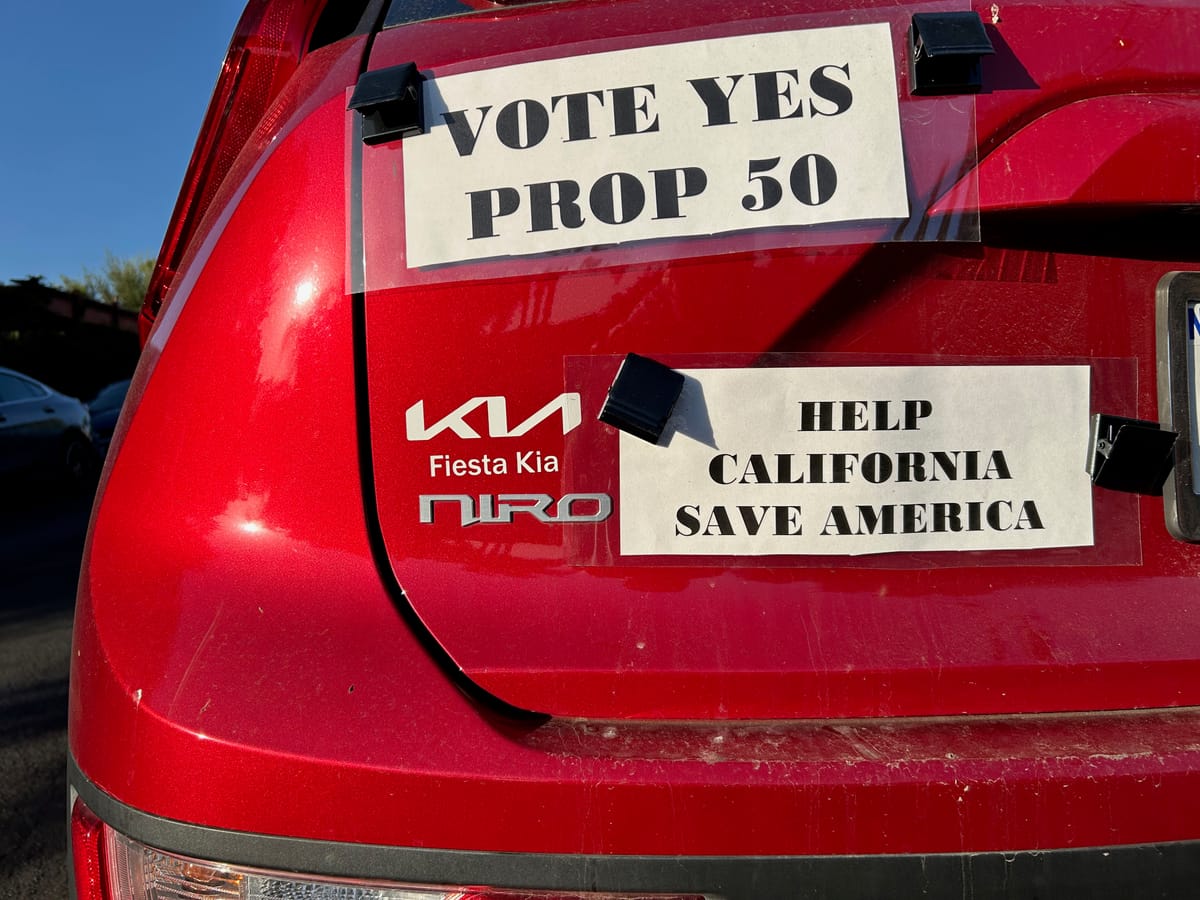When Gov. Gavin Newsom and other backers of Proposition 50 asked for voters to approve re-drawn congressional districts to benefit California Democrats, they cast it as a tit-for-tat response to gerrymandering in Texas by Republicans.
So, with a three-judge federal appeals court panel on Tuesday ordering Texas not to use its new map for the 2026 election, does this mean Proposition 50, approved by 64% of voters Nov. 4, is now moot?
Absolutely not.
Of course, Texas Atty. Gen. Ken Paxton has promised to appeal to the U.S. Supreme Court, though time is running out: According to the nonprofit news site Texas Tribune, candidates must file for the 2026 election by Dec. 8.

Though Proposition 50 text cites Texas’ redistricting, it doesn’t include any language that conditions enactment on whether the re-drawn districts in any other state survive court challenges. Here’s what the relevant portion of Proposition 50 says:
In response to the congressional redistricting in Texas in 2025, and notwithstanding any other provision of this Constitution or existing law, the single-member districts for Congress reflected in Assembly Bill 604 of the 2025–26 Regular Session pursuant to the requirements of Chapter 5 (commencing with Section 21400) of Division 21 of the Elections Code shall temporarily be used for every congressional election for a term of office commencing on or after the date this subdivision becomes operative and before the certification of new congressional boundary lines drawn by the Citizens Redistricting Commission pursuant to subdivision (d).
That’s a statement of purpose, not a condition of enactment.
Assembly Bill 604, which established the new districts put before voters, says nothing about Texas or other states.
Sure, the legislative analyses of AB 604 may have overstated how much California’s effort depended on the enactment of those districts in Texas and other states, but there is no triggering language in Proposition 50 or AB 604 that nullifies California’s re-drawn map in the event of a sudden retreat by Texas. Paul Mitchell, the election data expert who put together the new district maps, posted Tuesday on X:
“The trigger language was removed in the legislative process as it was clear that TX was redistricting. So, even if their map is invalidated/postponed, the Prop 50 maps stay in place.”

California Republicans and President Trump’s Justice Department have filed suit to stop Proposition 50 from taking effect. But that’s a separate matter. The federal complaint alleges that California’s new districts favor Latinos, therefore violating the voting rights of non-Latinos. It has nothing to do with Texas’ districts.
So, for now, Proposition 50 is very much alive, no matter what happens – or has happened – in Texas.










